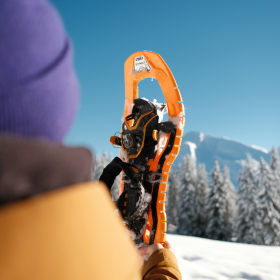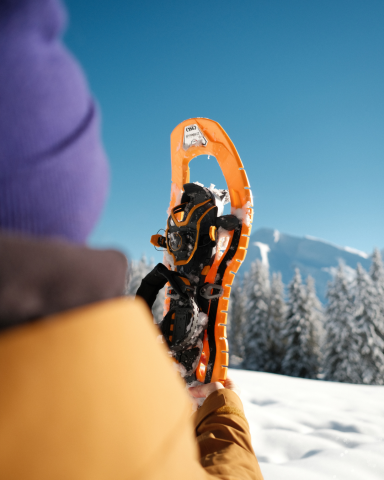HIKING DAYPACKS
Hiking Daypacks: The Perfect Companion for Outdoor Exploration
-
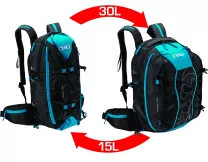
-
FINISHER 12L + 2 COLLAPSIBLE 500 ML BOTTLE
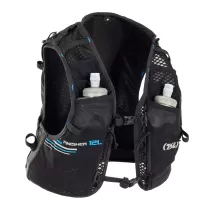
-
FINISHER 5L + 2 COLLAPSIBLE 500 ML BOTTLE
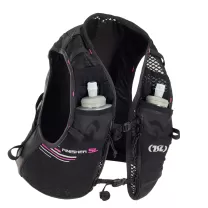
-
FINISHER 12L
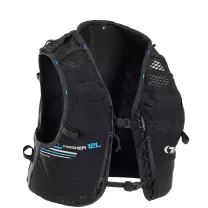
-
NewFINISHER 2L + 2 COLLAPSIBLE 500ML BOTTLE

-
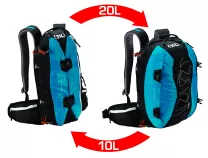
-
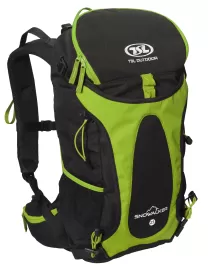
-
FINISHER 5L
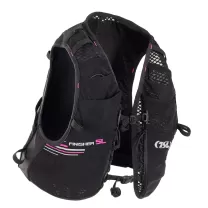
-
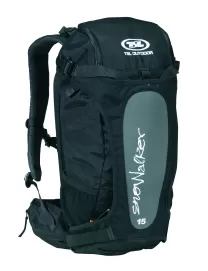
-
NewFINISHER 2L

-
NewRACE BELT


-
TRAINING BELT

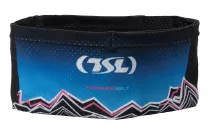
-
NewDISCOVER BELT


Choosing the ideal hiking daypack is crucial for any outdoor enthusiast, as it must balance functionality, comfort, and versatility. Whether you're embarking on a short trail or a full-day adventure, the right daypack can make all the difference. The challenge lies in understanding the key features that will support your journey, from low to high capacity needs, and ensuring your gear stays organized and accessible.
What to Look for in a Hiking Daypack
When selecting a hiking daypack, several important factors come into play. The size, design, and features of the pack will dictate how well it serves your needs on the trail.
-
Capacity: Most daypacks range from 15 to 35 liters, with smaller packs suitable for light hikes and larger options designed for more demanding trips. You may find packs that include dedicated compartments for sleeping bags, although these are more common in larger models. If you're looking for a streamlined pack, check the product details on the home page to understand what the pack offers in terms of storage.
-
Comfort: Padded shoulder straps and a breathable back panel are essential for comfort during longer hikes. You'll want a daypack that fits snugly to prevent excessive shifting and maintain balance. Some high-end packs also feature adjustable torso lengths, allowing you to customize the fit for your body type.
-
Organization: Having a well-organized pack can help keep your essentials accessible. Look for models with multiple compartments, mesh pockets, and hydration bladder sleeves. This will prevent you from having to rummage through the main compartment for items like snacks or a sleeping bag when you need them most.
-
Weight: Lightweight daypacks are ideal for those who prioritize agility on the trail. However, opting for a slightly heavier model may provide more robust support and padding. Check the product grid skeleton on retailer websites to compare weights across different models.
Choosing Between Lightweight and Robust Packs
When browsing for hiking daypacks, you’ll encounter both lightweight and more substantial packs. The difference often comes down to the materials and construction. A low-weight daypack might be perfect for short, fast hikes but may not offer the durability required for more rugged terrain.
-
Lightweight Packs: These are designed to minimize strain and are often made from thinner materials. They’re great for casual hikers who want a sleek design without sacrificing too much on performance. Brands like TSL Outdoor offer models that focus on lightweight but high-performing designs, helping to reduce fatigue over long distances.
-
Heavy-Duty Packs: On the other end of the spectrum, heavy-duty daypacks come equipped with extra padding, durable materials, and more compartments. These packs are better suited for alpine adventures where durability is key. While they may weigh more, the added comfort and durability make them a great choice for longer trips or more challenging environments.
Essential Features for Hiking Daypacks
Depending on your hiking style, you may want to consider specific features that will enhance your experience on the trail.
-
Hydration Compatibility: Many daypacks include a sleeve for a hydration bladder, allowing you to stay hydrated without stopping to take out a water bottle. This feature can be a game-changer, especially for hikes in hot or dry climates. Look for packs that specify hydration bladder compatibility in the content section of their product pages.
-
Compression Straps: These straps help to compress the pack’s load, keeping everything in place while reducing bulk. Compression straps can also serve as attachment points for extra gear like trekking poles or a sleeping bag. This is particularly useful when you're trying to make the most out of a smaller pack.
-
Rain Cover: While not always included, having a rain cover can protect your gear in wet conditions. Some daypacks come with a built-in rain cover, which is stored in a separate compartment at the base of the pack. This feature is especially handy for unpredictable weather.
-
Ventilated Back Panel: A mesh back panel with ventilation can help keep you cool during strenuous hikes. This design feature allows for airflow between your back and the pack, reducing sweat buildup and improving overall comfort.
How to Pack Your Daypack Efficiently
Packing your hiking daypack properly can make your hike much more enjoyable. The goal is to distribute weight evenly, keeping heavier items close to your back and lighter gear at the top. Whether you're carrying a sleeping bag or just the essentials, organization is key.
-
Heavy Items at the Bottom: Place heavier items, like water bottles, at the bottom of your pack to maintain a low center of gravity. This helps with stability and keeps the pack from pulling backward as you walk.
-
Essentials on Top: Items you’ll need quick access to, such as snacks or a rain jacket, should be packed at the top of your daypack or in external pockets. This ensures you won’t have to unload your entire pack to reach them.
-
Balance the Load: Avoid placing too much weight on one side of the pack. Distribute your gear evenly to maintain balance. This not only improves comfort but also helps prevent muscle strain during longer hikes.
Navigating the Hiking Daypack Market
Finding the perfect daypack can be overwhelming with the sheer number of options available online. You may notice product listings labeled with various sorting options like low to high and high to low, which can help you compare prices or features depending on your priorities.
When purchasing online, make sure to check the order status and shipping details. Some orders may take longer to process, especially if certain colors or sizes are in high demand. In the case of online orders that require special requests, such as additional rain covers or customization options, be sure to contact the seller directly to ensure availability.
For those using loyalty programs, be mindful of promotions that offer bonus points or credit card rewards for outdoor gear purchases. Some online orders will even allow you to earn loyalty points that can be redeemed for future purchases. For example, programs like Canadian Tire Money offer bonuses when buying outdoor gear, including hiking daypacks. Be sure to check if your preferred retailer participates in these reward systems.
Comparing Top Brands
Several well-known brands dominate the hiking daypack market. Depending on your preferences for comfort, durability, and specific features, you may want to focus on one or more of the following options.
-
TSL Outdoor: Though more recognized for their snowshoe and trekking poles offerings, TSL Outdoor also offers daypacks that are designed with an emphasis on balance and versatility. Their focus on lightweight designs makes them a strong contender for fast-paced, minimalist hikes.
Maximizing the Use of Your Hiking Daypack
Once you've selected your ideal daypack, making the most out of it will ensure that it serves you well on countless adventures.
-
Customizing for Your Hike: Many hikers appreciate the flexibility of daypacks that can adapt to different trail conditions. Compression straps, extra pockets, and attachment points for trekking poles or a sleeping bag can turn a basic daypack into a multi-functional tool.
-
Keeping Your Gear Dry: Even if your pack doesn’t come with a rain cover, you can still keep your gear dry by lining the inside with a garbage bag or using waterproof stuff sacks. This is especially important if you're hiking in unpredictable weather conditions.
-
Using the Pack for Multi-Use: Your hiking daypack isn’t just limited to the trails. Many hikers find their daypacks useful for urban travel, commuting, or even overnight stays. The pack’s versatility makes it a valuable part of your outdoor and everyday gear collection.
Care and Maintenance
Proper care for your daypack will ensure it lasts for many seasons. After each hike, make sure to clean out any dirt or debris from your pack. Spot cleaning with mild soap and water will remove most stains, and for larger spills, a gentle wash in the bathtub may be necessary.
-
Drying: Always allow your pack to air-dry completely before storing it. Avoid direct sunlight for prolonged periods, as this can degrade the materials over time.
-
Zipper Maintenance: Keep zippers running smoothly by occasionally lubricating them with a silicone-based spray. This is especially important after dusty or wet hikes.
Managing Returns and Order Status
In the event you need to return your daypack or track an online order, many outdoor retailers provide easy return options through their customer service portals. Be sure to check your order status regularly, especially if you’ve placed a large sale order or need the pack by a specific date. Some retailers offer real-time tracking on orders, allowing you to stay informed about shipment progress.
If you're shopping during a sale period, make sure to review the retailer's terms of service and applicable regular annual rates, as discounts may vary depending on the time of year or special promotions.
With the right hiking daypack, you’ll be well-prepared for your next adventure, whether it’s a casual trail walk or a more challenging hike. By focusing on comfort, functionality, and features that suit your specific needs, you'll be able to enjoy your time outdoors to the fullest.
-
Trekking
-
Trail
